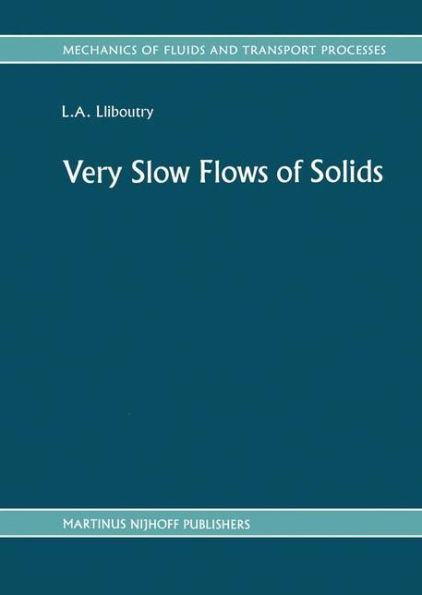Very Slow Flows of Solids: Basics of Modeling in Geodynamics and Glaciology
This book is written primarily for Earth scientists faced with problems in thermo mechanics such as the flow and evolution of ice-sheets, convection currents in the mantle, isostatic rebound, folding of strata or collapse of cavities in salt domes. Failure, faults, seismic waves and all processes involving inertial terms will not be dealt with. In general such scientists (graduate students beginning a Ph. D. for instance) have too small a background'in continuum mechanics and in numerical computation to model conveniently these problems, which are not elementary at all. Most of them are not linear, and therefore seldom dealt with in treatises. If the study of reality were clearly cut into two successive steps: first to make a physical model, setting up a well-posed problem in thermo-mechanics, and second to solve it, the obvious solution would be to find a specialist in computational mechanics who could spend enough time on a problem which, although maybe crucial for on-going fundamental research, has little practical interest in general, and cannot be considered properly as a noteworthy progress in Mechanics. But this is not the way Science develops. There is a continuous dialectic between the building up of a model and its mathematical treatment. The model should be simple enough to be tractable, but not oversimplified. Its sensitivity to the different components it is made of should be investigated, and more thought is needed when the results contradict hard facts.
"1112169350"
Very Slow Flows of Solids: Basics of Modeling in Geodynamics and Glaciology
This book is written primarily for Earth scientists faced with problems in thermo mechanics such as the flow and evolution of ice-sheets, convection currents in the mantle, isostatic rebound, folding of strata or collapse of cavities in salt domes. Failure, faults, seismic waves and all processes involving inertial terms will not be dealt with. In general such scientists (graduate students beginning a Ph. D. for instance) have too small a background'in continuum mechanics and in numerical computation to model conveniently these problems, which are not elementary at all. Most of them are not linear, and therefore seldom dealt with in treatises. If the study of reality were clearly cut into two successive steps: first to make a physical model, setting up a well-posed problem in thermo-mechanics, and second to solve it, the obvious solution would be to find a specialist in computational mechanics who could spend enough time on a problem which, although maybe crucial for on-going fundamental research, has little practical interest in general, and cannot be considered properly as a noteworthy progress in Mechanics. But this is not the way Science develops. There is a continuous dialectic between the building up of a model and its mathematical treatment. The model should be simple enough to be tractable, but not oversimplified. Its sensitivity to the different components it is made of should be investigated, and more thought is needed when the results contradict hard facts.
329.99
In Stock
5
1

Very Slow Flows of Solids: Basics of Modeling in Geodynamics and Glaciology
510
Very Slow Flows of Solids: Basics of Modeling in Geodynamics and Glaciology
510
329.99
In Stock

Product Details
| ISBN-13: | 9789024734825 |
|---|---|
| Publisher: | Springer Netherlands |
| Publication date: | 06/30/1987 |
| Series: | Mechanics of Fluids and Transport Processes , #7 |
| Edition description: | 1987 |
| Pages: | 510 |
| Product dimensions: | 6.10(w) x 9.25(h) x 0.24(d) |
From the B&N Reads Blog
